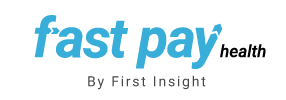Reduce Denied Claims with Proactive Insurance Eligibility Verification
/Verifying a patient’s insurance eligibility and benefits is a critical first step before you submit an insurance claim to a clearinghouse or vision insurance plan payer. Insurance eligibility verification remains one of the top reasons for claim denials.
Patient eligibility verification is one of the easiest ways to maintain clean claims, but verification is often the most neglected process. Let’s explore ways to work smarter with proactive optometry and ophthalmology insurance eligibility verification solutions.
Why is Insurance Eligibility and Benefits Verification Critical?
Eligibility verification ensures the insurance data is correct and helps determine the amount a patient may owe (e.g., co-pays, co-insurance, and deductibles). Providing more accurate cost estimates to your patients can significantly boost patient satisfaction and save you from future claim denials.
On average, our Fast Pay Health optometry billing consultants report that providers who verify benefits and eligibility before the appointment date collect 30% to 40% more than providers who don’t verify benefits.
While most manual verifications take a minimum of 12 minutes, reports the Council for Affordable Quality Healthcare (CAQH), this does not account for the time it takes to follow up on claim status issues.
Verifying eligibility and benefits for your patients is crucial to maintaining healthy revenue. Knowing your eye care billing is handled proficiently will ultimately drive your success and deliver continual cash flow. If you ignore verifying insurance eligibility and benefits up front, you risk unhealthy and serious revenue problems
Insurance Eligibility Verification Pro Tips
Below are nine patient insurance eligibility verification services to perform before providing any services to avoid the risk of rejected or denied claims.
Verify that insurance data is correct by confirming the insurance plan policy coverage effective and term dates (via phone or insurance websites) with the insurance payer.
Obtain the insurance verification reference call number and keep it in your records.
Review the patient’s eligibility at least 5–7 days before the patient’s initial visit. Don’t wait to check eligibility until you file the claim since many issues can’t be resolved after the exam.
Always check the patient’s insurance card when they check in to confirm you have the correct insurance plan listed.
Obtain prior authorization for specific services from the insurance payer, and if needed, get a referral (written order) from the primary care provider (PCP). Verify the prior authorization and referral number(s) are correct on the claim.
Confirm vision plan coverage is active for exams and materials if the patient has vision insurance coverage.
If the patient doesn’t have insurance coverage, follow a process to let them know their financial obligation.
If you suspect that Medicare (or commercial non-Medicare insurance) may not cover a procedure or service, you must obtain an Advance Beneficiary Notice of Noncoverage (ABN) before providing the specified procedure or service to the patient.
Verify the patient’s out-of-pocket insurance costs and verify co-pays for exams and materials for vision insurance plans. Let the patient know their financial obligation upfront.
Related: 6 Eye Care Claim Rejections You Can Overcome
Related: 4 Tips for Better Optometric Billing and Maximizing Cash Flow
Real-World Optometry Practice Challenge and Solution
Challenge: Verifying a patient’s insurance eligibility and benefits was an ongoing task for Julie Honda, OD, often taking five to six hours per week, which was difficult to do between patients. Late scheduling changes meant someone had to verify insurance again. Below Dr. Honda shares how Fast Pay Health manages patient eligibility verification for her practice.
Solution: “We coordinate patient eligibility verification when our Solutionreach appointment reminders go out to the patients seven days prior,” says Dr. Honda. “Patient data is easily accessible in our MaximEyes cloud optometry practice management software since it integrates with Solutionreach. Fast Pay Health verifies insurance six days in advance—this way, we are not verifying as many patients who cancel appointments.”
“Each day, Fast Pay Health checks for stragglers that end up on the schedule after finishing that day’s verification. They locate last-minute appointments and verify the add-ons. Our staff members are only left with verifying perhaps one or two patients who ended up scheduling the same day or a patient whose insurance hasn’t been updated in the system.”
Read more about why Dr. Honda has worked with Fast Pay Health for the past eight years to overcome billing challenges and keep the positive momentum in her practice, all while getting paid faster. Check out her success story, Efficient Optometry Billing Eases Stress for a Busy Practice.
Experience Positive ROI with a Complete Optometric Billing and RCM Solution
The Fast Pay Health optometric billing and revenue cycle management (RCM) approach is to triple-check everything so that you see a consistent return on your investment. We know the ins and outs of working with the top vision insurance payers, and we take the time to research and analyze every process to maximize your payments—so you can focus on patient care.
Get a complimentary practice analysis. We work with ANY eye care practice management software.



